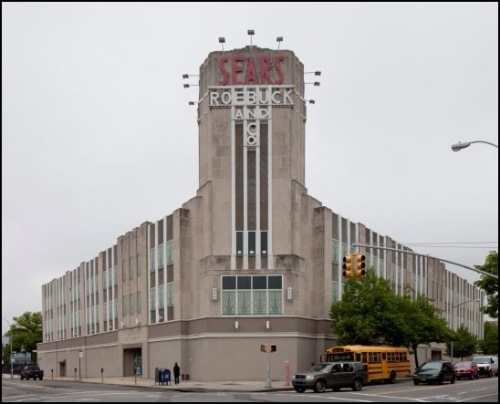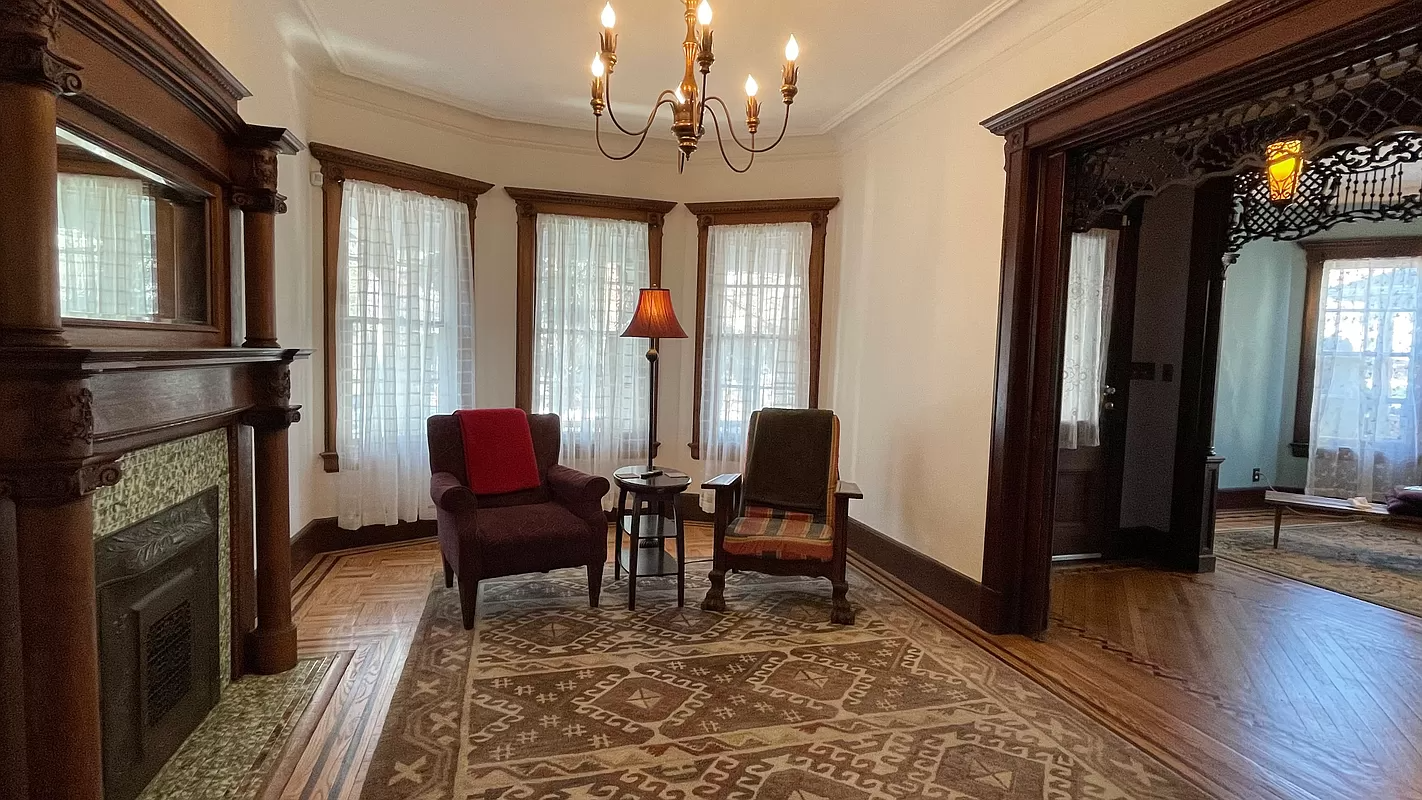Building of the Day: 2307 Beverley Road
(All photos by Christopher D. Brazee, for Landmarks Preservation Commission, 2012) Brooklyn, one building at a time. Name: Sears, Roebuck & Company Department Store Address: 2307 Beverley Road Cross Streets: Corner Bedford Avenue Neighborhood: Flatbush Year Built: 1932 Architectural Style: Late Art Deco Architect: Nimmons, Carr & Wright, with Alton Craft Other Buildings by Architect:…

(All photos by Christopher D. Brazee, for Landmarks Preservation Commission, 2012)
Brooklyn, one building at a time.
Name: Sears, Roebuck & Company Department Store
Address: 2307 Beverley Road
Cross Streets: Corner Bedford Avenue
Neighborhood: Flatbush
Year Built: 1932
Architectural Style: Late Art Deco
Architect: Nimmons, Carr & Wright, with Alton Craft
Other Buildings by Architect: NC & W – across country, various Sears stores and private homes for Sears execs.
Landmarked: Yes, Individual landmark, designated last week! (2012)
The story: It’s hard to believe, but this store has been here for over 80 years. Sears started out in the 1890’s as a mail order catalog, selling a huge variety of goods to customers in rural areas who had little or no access to stores and shops. Their first retail store was built in 1925. Based in Chicago, Sears & Roebuck expanded all across the country, and because of Manhattan’s garment center, was a presence in NYC long before their bricks and mortar stores were in place. When they sought to expand their retail presence in the New York City area, Flatbush was seen as an ideal location.
This was not the first location of a Sears & Roebuck store. The first one was located near Ebbetts Field, was built in 1930, and was demolished in 1960. (I’m going to find a photo.) That store, which was right near Brooklyn’s Automobile Row, sold mostly automotive parts, tools, and hardware. This new and much larger store would be very different, with a larger and more expanded selection of goods, including clothing. The land was purchased, and existing homes and small businesses were demolished.
The site, bordered by Beverley Road and Bedford Avenue, was chosen to appeal to both pedestrian and motor traffic. Flatbush was chosen because it was both urban, with public transportation, and suburban, with surrounding neighborhoods with houses equipped with garages, and cars. Studies done at the time showed that department stores appealed to women, but there were more men driving cars. This location would bring everyone in. This store was built with a large parking lot, a marketing strategy that would prove to be very successful.
The architects for the new store were a Chicago firm. Nimmons, Carr & Wright had a long affiliation with Sears, and designed many of their stores and warehouses across the country. They also designed a couple of Chicago-area homes for Sears executives. They liked to pair with a local firm, and chose Alton Craft, a NY based architect, to work with them here. This store, like many of their stores, was designed in the Art Deco style, an architectural style that was especially suited for department store design. Their use of a tall central tower was a trademark of the firm, and although it had the practical purpose of hiding the water tower, as well as heating and cooling machinery, it functioned here as the tallest structure in the neighborhood, advertising Sears & Roebuck all across Flatbush.
The store opened November 5, 1932, in the middle of the Great Depression. The guest of honor and keynote speaker was Eleanor Roosevelt. It was her last public appearance before her husband became President. In spite of the economic hard times, this branch of Sears soon became one of the top stores in the chain. They initially had hired around 300 people, in eight years, another addition, and more employees would be added. Sears was a retail success.
The store had a large auditorium, called “Sears Hall” built on the third floor. It was built to show Sears’ commitment to Brooklyn. It held 650 people, and was available to local Brooklyn groups, without charge. Maria Fisher LaGuardia, the Mayor’s wife, attended the opening, in 1936. Over the years, even as shopping habits and locations changed, this store remained open, and busy.
In 2005, Sears merged with K-Mart. Over the last 30 years, many alterations took place on the façade. Prior to 1989, all of the original display windows were filled in, and then painted over. Many of the other windows have been changed, and most have been covered with plastic panels with an Art Deco motif on them. At least some effort was made to keep with the original design. The entrances were also changed, with only a rear parking lot entrance in use now. The original Art Deco entryways on Beverley and Bedford are closed.
In spite of all of the changes, the Art Deco Sears store remains pretty much intact, and the Art Deco tower still rises over Flatbush. When landmarking was proposed for the store, Sears backed the designation, asking only that the parking lot not be designated. It was not. The building was designated as an individual landmark on May 15, 2012. GMAP











What's Your Take? Leave a Comment